The (Best) Book on Dividends
Fund manager Dan Peris explains how you can reap the rewards of dividend-paying stocks in his new book, The Strategic Dividend Investor.

I'm amazed at how so many otherwise worthy stock-market books ignore dividends or dismiss them as meaningless. Even Kiplinger columnist Jeremy Siegel, in his classic book Stocks for the Long Run, glides over them in 350 pages of otherwise astute analysis of why stocks are indispensable.
By no means am I suggesting that Siegel and others are clueless. They make many valid points in arguing against the relative importance of dividends. For example, they note, when you get a dividend in a taxable account, you need to square up with the IRS by the following April 15. When it comes to paying taxes on appreciation, you can control when to realize a gain. Losses have value, too, because you can use them to offset gains and some non-investment income. You can’t use capital losses to shelter dividend income.
But dividends have a lot to commend them, too. And you’ll learn about them if you read The Strategic Dividend Investor, a new book by Dan Peris, a splendid fund manager with a doctorate in history whom I’ve quoted a few times in this column. (It’s available for $15 in print and $10 in e-book format at Amazon).

Sign up for Kiplinger’s Free E-Newsletters
Profit and prosper with the best of expert advice on investing, taxes, retirement, personal finance and more - straight to your e-mail.
Profit and prosper with the best of expert advice - straight to your e-mail.
Peris manages Federated Strategic Value Dividend Fund. It is a broker-sold fund with hefty sales charges, so Kiplinger’s readers don’t hear much about it. Class A shares (symbol SVAAX) impose a 5.5% sales charge and take another 1.05% per year for expenses. Even if the fees were lower, I wouldn’t be enthusiastically endorsing the fund. Many investors are better served by buying a basic market index fund, adding a dividend-oriented exchange-traded fund, such as iShares Dow Jones Select Dividend (DVY), and throwing some high-quality dividend-paying stocks and bonds into the mix. This avoids high fund expenses and minimizes commissions, except for trivial online trading tolls. You also avoid the chance that a fund will see too much money flowing in and out at inconvenient times, making it difficult for its manager to, well, manage efficiently.
That’s not a problem for Peris, however, because his fund doesn’t attract hot money. That said, Strategic Value is having a fine 2011. Year to date through June 10, the fund returned 5.84%, four percentage points better than Standard & Poor’s 500-stock index and two points ahead of DVY, the Dow dividend ETF. Strategic Value’s current yield is 3.3%. When I screened for comparable no-load funds on Morningstar, the closest match in terms of performance and holdings was Dodge & Cox Stock (DODGX), a member of the Kiplinger 25 and a fund I’d recommend to anyone.
Back to dividends, as long as the maximum federal income tax rate on them remains 15%, they are a treasure. Moreover, even after big share-price run-ups since the stock market’s 2009 nadir, many blue-chip stocks yield as much or more than the same company’s short- and medium-term bonds. But bonds don’t provide dividend increases, and dividends are growing in most industries except banking. Among stocks in the S&P 500, dividends are up 17.2% from a year ago. In 2010, 256 companies resumed or initiated dividends, and 196 have done so thus far in 2011.
Many of you are in the know about this and need no persuasion. But it’s worth repeating, since these days, buying a stock without a dividend, unless it’s Apple, is silly. So I suggest you read Peris’s book. It’s not long, and much of it contains nuts-and-bolts advice for choosing dividend stocks. He likes AT&T (T) and Verizon Communications (VZ) -- they were his fund’s two top holdings at last report -- and explains why he’s confident that the two telecommunication giants will remain substantial sources of yield. The clues are in the companies’ quarterly cash-flow statements, which Peris finds way more useful than earnings statements or even balance sheets. If you find a company that doesn’t have much in the way of capital-expenditure requirements and generates rising cash flow (earnings plus depreciation and other non-cash charges), that company will produce rising free cash flow, and you have discovered a potential fountain of dividends.
Kimberly-Clark (KMB) is one of Peris’s prime examples. So are tobacco companies (please don’t flame me about smoking; I hate it with a passion, but this isn’t a health column). Their dividends are secure despite periodic inflation scares. But I get the sense Philip Morris could pay billions upon billions to cancer victims and their families and still have the wherewithal to pay big dividends.
Peris mocks stock buybacks because shareholders don’t really get cash payments. He offers welcome info on trolling for dividends in foreign stocks, something you might overlook but can do with the help of a Web site such as www.adr.com. Peris also details the essential role of dividends in the long-term returns of stocks. Without dividends, the stock market’s long-term return would be nowhere near that gaudy compounded annual return of 10% that Jeremy Siegel sings about in Stocks for the Long Run (over the long run, dividends account for about 42% of the market’s long-term returns). Read Siegel, please. But give a dividend book equal time. And I haven’t seen a better one than The Strategic Dividend Investor.

-
 Strategies to Optimize Your Social Security Benefits
Strategies to Optimize Your Social Security BenefitsTo maximize what you can collect, it’s crucial to know when you can file, how delaying filing affects your checks and the income limit if you’re still working.
By Jason “JB” Beckett Published
-
 Don’t Forget to Update Beneficiaries After a Gray Divorce
Don’t Forget to Update Beneficiaries After a Gray DivorceSome states automatically revoke a former spouse as a beneficiary on some accounts. Waivers can be used, too. Best not to leave it up to your state, though.
By Andrew Hatherley, CDFA®, CRPC® Published
-
 Stock Market Today: Dow Slips After Travelers' Earnings Miss
Stock Market Today: Dow Slips After Travelers' Earnings MissThe property and casualty insurer posted a bottom-line miss as catastrophe losses spiked.
By Karee Venema Published
-
 Stock Market Today: Stocks Stabilize After Powell's Rate-Cut Warning
Stock Market Today: Stocks Stabilize After Powell's Rate-Cut WarningThe main indexes temporarily tumbled after Fed Chair Powell said interest rates could stay higher for longer.
By Karee Venema Published
-
 Stock Market Today: Stocks Reverse Lower as Treasury Yields Spike
Stock Market Today: Stocks Reverse Lower as Treasury Yields SpikeA good-news-is-bad-news retail sales report lowered rate-cut expectations and caused government bond yields to surge.
By Karee Venema Last updated
-
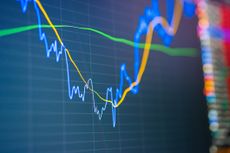 Stock Market Today: Nasdaq Leads as Magnificent 7 Stocks Rise
Stock Market Today: Nasdaq Leads as Magnificent 7 Stocks RiseStrength in several mega-cap tech and communication services stocks kept the main indexes higher Thursday.
By Karee Venema Published
-
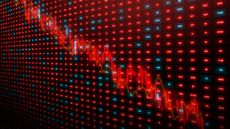 Stock Market Today: Stocks Tumble After a Hot Inflation Print
Stock Market Today: Stocks Tumble After a Hot Inflation PrintEquities retreated after inflation data called the Fed's rate-cut plans into question.
By Dan Burrows Published
-
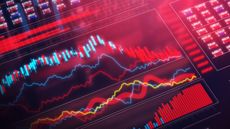 Stock Market Today: Stocks End Mixed Ahead of Key Inflation Reading
Stock Market Today: Stocks End Mixed Ahead of Key Inflation ReadingEquities struggled before tomorrow's big Consumer Price Index report.
By Dan Burrows Published
-
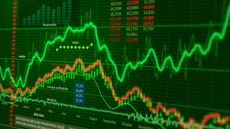 Stock Market Today: Stocks Closed Mixed in Choppy Trading
Stock Market Today: Stocks Closed Mixed in Choppy TradingVolatility returned as market participants adjusted their expectations for rate cuts.
By Dan Burrows Published
-
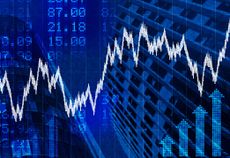 Stock Market Today: Stocks Rally After Blowout Jobs Report
Stock Market Today: Stocks Rally After Blowout Jobs ReportStocks soared into the weekend as investors brushed off strong payrolls data and lowered rate-cut expectations.
By Dan Burrows Published